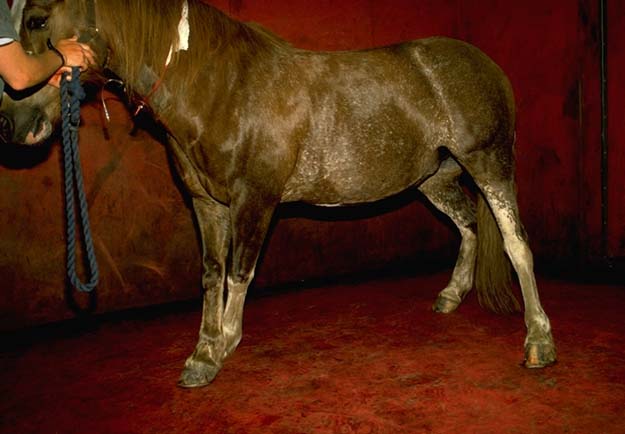equis - Articles
Urine: dipstick analysis
Overview
- Changes in chemical and physical characteristics of urine occur in many diseases and include urinary tract disease, hepatic disease, hematologic disorders, endocrinopathy, neoplasia, musculoskeletal disease and hepatic encephalopathy
 .
. - These changes in characteristics can predict disease.
- Therefore, used as a screening test in any ill patient.
Uses
In combination
- With other laboratory tests for investigation of polyuria /polydipsia.
- Serum creatinine Blood: biochemistry - creatinine and urine specific gravity Urine: specific gravity (refractometer) to assess renal function.
- Serum glucose Blood: biochemistry - glucose to confirm hyperadrenocorticism.
- Culture and sensitivity Urine: microbiology to investigate upper and lower urinary tract infection Bladder: cystitis - bacterial .
- Ultrasonography to investigate hematuria.
- Hematology in severe hemolytic disease Anemia: auto-immune hemolytic (AIHA) .
Other points
- Dipstick urine specific gravity must be ignored; use refractometer method.
Sampling
Subscribe To View
This article is available to subscribers.
Try a free trial today or contact us for more information.
Tests
Methodologies
- Determine specifc gravity by refractometer. Dipstick specific gravity does not correlate well with refractometry
- Rapid, complete immersion of the dipstick with immediate shaking off of excess urine as well as holding the dipstick level is needed to avoid run-off between pads.
- Compare the color change of dipstick with the reference range at the correct time.
Availability
- Can be performed in-house by most veterinary clinics.
- All external laboratories.
Technique intrinsic limitations
- Reliable urine specific gravity reading.
Technician extrinsic limitations
- Following the same approach for every analysis results in consistent findings and allows the technician to develop experience.
Result Data
Subscribe To View
This article is available to subscribers.
Try a free trial today or contact us for more information.